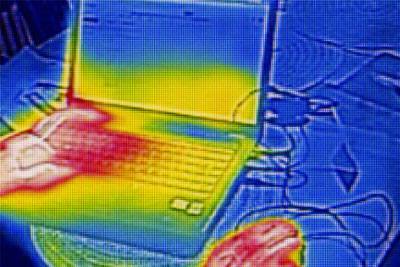How Infrared Light was Discovered
Sir Frederick William Herschel, the accomplished scientist, was born in 1738 in modern-day Germany. In addition to numerous astronomical achievements, most notably the discovery of Uranus in 1781, he also contributed significantly to the study of light.
In 1800, he discovered infrared light. This began as an investigation into how and why when sunlight went through various colored filters; it produced different amounts of heat. Herschel hypothesized that the colors could have different temperatures. He set about studying this by passing light through a glass prism, creating a color spectrum and analyzing each color’s temperature. With three special thermometers. For each color, one was placed within its bounds while the other two were outside as controls. The thermometer in the color had a higher temperature than the others, and he found that each color, going from violet to red, was warmer than the last.
Out of curiosity, he then placed a thermometer next to the red light, where no colors from the spectrum were visible. It turned out that this area had an even higher temperature than the colored sections. In subsequent experiments, he demonstrated that this invisible type of light refracted and reflected the same way sunlight did.
This light came to be known as infrared light or radiation, with “infra” meaning “below” in Latin. Since its discovery, people have found a number of applications for infrared light. For example, in the medical field it is used to analyze bodily fluids and tissues, in firefighting it can detect people and animals stuck in a fire and policemen use it for surveillance. Herschel probably would have been most excited to know that infrared is also an important part of astronomy, providing a way to see distant celestial bodies more clearly.
No matter what you use infrared lights for, Konica Minolta Sensing is here to help. We offer a wide selection of light measuring instruments, like the CAS 140CT and CAS 140CTS Spectrophotometers, capable of measuring infrared up to 2,100 nanometers. Contact Konica Minolta Sensing today to learn more!











